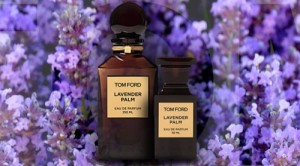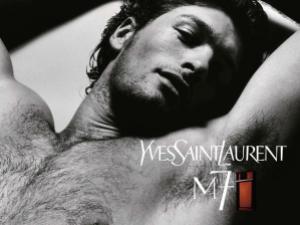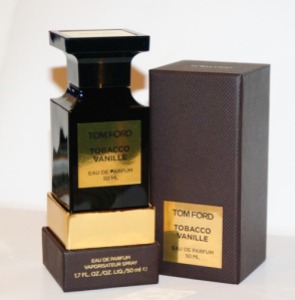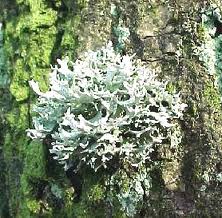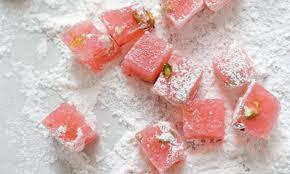Perfume tastes never develop in a vacuum. Like ducklings, we are imprinted by the things around us, especially from an early age. Our childhood experiences, the perfume tastes of our family, the first scents we were exposed to and adored — these all help to shape our tastes as an adult. My early childhood experiences happened, at one point, to involve an excessive amount of lavender. Unlike other smells to which I was exposed at the time — such as orientals or powerhouse, indolic florals — I ended up having some hesitancy about the ingredient for much of the rest of my life.
As a perfume blogger, however, I try to keep an open mind and to be fair to all sorts of scents. But the reality is that perfume is a highly subjective thing, and some people are simply not the ideal, target audience for certain types of fragrances. Such is the case with me and Tom Ford‘s Private Blend Lavender Palm — a scent I can appreciate, but can’t relate to on a personal level. Some perfumes have changed my mind about ingredients that I previously struggled with, but Lavender Palm doesn’t. I find it quite schizophrenic and discordant at first, then far too simplistic and unbalanced. The very high cost for what later becomes a very simple fragrance further guarantees that I would absolutely never wear it. However, I think there are some who may find this to be a delightful twist on the more traditional lavender fragrances.
Lavender Palm is a unisex eau de parfum which Fragrantica puts in the category of “Aromatics.” The perfume was created for Tom Ford by Yann Vasnier and is described by Selfridges as:
Tom Ford’s creative take on the free–spirited ethos and chic elegance that defines California. It is a sensuous yet stylish remix of earthly lavender, bright citrus, moist palm leaf accord, clary sage, sensual woods and smooth tonka bean.
For some, Lavender Palm actually does seem to evoke California. One of my closest friends tried it months ago and wrote to me that, as he left Nordstrom’s, a waft of air brought out the perfume and strongly reminded him of home. He actually is from Southern California originally; and he had no clue about Tom Ford’s goal when he wrote to me. Others seem to have had the same impression, such as the reviewer at CaFleureBon who imagined Palm Springs and the big parties in the 1970s at the famous Kaufmann House. I’ve lived in California — both Northern and Southern — and I’m afraid I don’t see it.
According to Fragrantica, the notes in Lavender Palm are as follows:
two types of lavender, bergamot, lemon, clary sage, lime blossom, pink and white oleander, olibanum, green moss and vetiver.
Lavender Palm opens on my skin with an immediate burst of lavender and lemon, but there are vague hints of other things hiding underneath the surface. Less than a minute in, they start to rise to the surface. There are florals, but also, some very woody, earthy, musky, and herbal elements. The latter borders almost on the medicinal at times; it is sharply pungent and with a subtle whiff of something camphorous. At the same time, one can definitely smell a very root-y type of vetiver. It’s not fresh, bright or green, but dark brown and smoky.
There is also an extremely disconcerting talcum powder note that smells simultaneously of irises and of babies. It has to stem from the oleander plants which Fragrantica describes as having “talcum-like floral note, with hints of pollen sweetness.” Here, the talc is a very disconcerting note when placed side-by-side with the earthy vetiver and the very pungent herbaceousness of both the lavender and the clary sage. When you add in the scent of the top of a baby’s head, it borders on the jarring and discordant for me. It’s almost as if the perfume is Dr. Jekyll and Mr. Hyde — two completely separate perfume personalities in one bottle.
Twenty minutes in, there is an odd creaminess that suddenly appears, along with an increasingly strong impression of medicinal camphor. I can’t pinpoint the cause, though I suspect it results from the clary sage (which is not the same sort of sage that you use in cooking). In my prior dealings with the plant, it smelled sweet, fresh, and with just a hint of lavender or peppermint. Fragrantica, however, describes the plant as having a “bracing herbaceous scent that smells like lavender with leathery and amber nuances, thus very popular from old times for perfumed products.”
Even if that’s the version which I’m smelling here, it doesn’t explain the more medicinal edge to the perfume. I can’t attribute it to either the Lavender Absolute or Lavandin (a lighter version of the scent) which CaFleureBon says were used in the perfume. And it doesn’t smell like the sort of pungency one finds in moss or oakmoss, either. It can’t come from the olibanum, because that’s just another word for frankincense. No, what I’m smelling are intensely mentholated, medicinal notes that almost resemble the camphorous aspects of pine trees or cypress wood.
But Lavender Palm isn’t finished yet. There is also something that is an oddly salty, almost aquatic note. It’s not wet, exactly, and it’s also not exactly like the beach, so it’s hard to explain but there is definitely an oddly aquatic element. I thought I was hallucinating, so I did a Google search for the “Lavender Palm and aquatic.” It turns out that I’m not the only one. One blogger, Full Time Ford, (and who seems to write about nothing but Tom Ford) wrote a whole review about how the perfume reminded him of the Adriatic Sea. But, on Basenotes, another poster (“rogalal“) was not so enchanted, writing:
That aquatic “seaweed” smell comes in and the lavender goes all metallic and artificial. At this point, it’s really only the leftover cumin that’s keeping Lavender Palm from smelling like hundreds of commonplace metallic aquatics. The base is a dark mix of piney tar smell and quinoline (that dark leather smell used most notably in Tuscan Leather), but the aquatic chemical smell sticks around, keeping the lavender very metallic and fake-smelling.
I don’t agree with a number of things in that review, not the least of which is the mention of cumin! (Really??!) I certainly don’t think the lavender ends up smelling metallic or fake. But I am glad to see that he also experienced the same aquatic smell and that he too noted a pine-tar smell.
So, to summarize, at the end of the first thirty minutes, I am simultaneously smelling: lavender, lemon, earthy vetiver roots, salty aquatic notes, something bordering on creamy, as well as mentholated and medicinal elements, iris, talcum powder, and the head of a newborn baby. I find that to be completely schizophrenic. Forget what I said about two perfumes personalities in one bottle. This is not bipolar; it’s Sally Field’s famous Sybil with multiple personality disorder.
To be fair, when I tried Lavender Palm a second time and put on much less, I had a different experience. As with many Tom Ford scents, the amount you use can impact what you smell — which is why I usually test each one at least twice. Using a lesser amount, I essentially smelled just lavender, lemon and vetiver — in one straight linear line. There were brief hints of more herbal elements like clary sage but, basically, it was just a big, simple, flat-line. I’m not sure if that’s much better….
In both tests, however, the perfume’s middle and final stages essentially turn into a simple triad of lavender, vetiver and lemon. No benzoin, no tonka, no vanilla, no soft mosses. Instead, the vetiver which often dominated over the lavender with hefty notes of earthiness and smokiness, and some occasional flickers of lemon. There really isn’t much more to say than that.
I like the idea of a lavender perfume that isn’t the usual soliflore or a predictable lavender vanilla scent. And I expected to love a lavender perfume that included vetiver, bergamot, and frankincense (which is one of my favorite notes). Unfortunately, this is just not a scent for me. I couldn’t wrap my head around that odd, schizophrenic opening in the first hour and then, subsequently, I found the fragrance both simplistic and imbalanced with the excessively top-heavy vetiver.
For those who are looking for a bright, fresh lavender, I don’t think this is the one for you, either. While the perfume is much lighter than many of the fragrances from the Private Blend line, it is light only on a relative basis. The earthiness and smokiness of the vetiver and the dark woods give it a far greater heft than what you may be used to in more conventional, sweet lavender fragrances. Those elements may also render it too masculine for some.
It may be perfect, however, for those who are looking for an unobtrusive but woody lavender perfume. From CaFleureBon to Basenotes to Fragrantica, the majority opinion is that the perfume is average to moderate in sillage and projection, especially by the standards of a Tom Ford fragrance. Unfortunately, it is also reported to have below-average duration. (I think that’s the first time I’ve seen a CaFleureBon reviewer say that!) On me, Lavender Palm had moderate-to-low sillage for the first hour, and then became close to the skin after two hours. All in all, on my perfume-consuming skin, it lasted about 6.5 hours — which is very low for a Tom Ford, especially from the super-concentrated Private Blend collection. On others, I’ve read reports ranging from “it does not last” to 6 hours to 10 hours. The huge Tom Ford fan blogger, Full Time Ford, claims he found faint traces on his skin over 24 hours later — but that sounds like a pretty unique case from all that I’ve read.
The real issue may be the cost. Tom Ford Private Blend perfumes are never exactly cheap. But, in my opinion, they normally have a lot more complexity and depth than Lavender Palm. One of the Fragrantica commentators who loved it and found it “simplistic… but done incredibly well” seemed to have drawn the line at the price:
What is though no laughing matter is the criminal price they charge for what is essentially a lemony lavender.
I think it more a vetiver-lavender, but I agree with his general point. Even more so when one considers that lavender is hardly the most expensive ingredient around. Lavender Absolute may be a slightly more costly version, but still, it’s lavender — and $205 for the very smallest bottle? (As a side note, in its limited-distribution run at just the Beverly Hills boutique, a 250 ml bottle was priced at $950. Yes, you read me correctly and no, that is not a typo. $950!!! The prices was adjusted downwards when the perfume was fully launched in January 2012.)
Nonetheless, as I always say, price is subjective, as is the whole issue of perfume itself. In fact, I think perfume is one of the most subjective things around, so if this is a scent that intrigues you, I hope you will give it a try at the very least.
But you may want to do it soon. Lavender Palm was released in limited distribution less than two years ago (in the fall of 2011) and just a year ago (in January 2012) on a world-wide basis. Yet, for reasons that I simply cannot understand, it is not listed anywhere on Tom Ford’s website! It’s not in the Private Blend section, the Women’s fragrance section, the men’s fragrances, or in any other part of the “Beauty” section. Believe me, I searched repeatedly!
I have read nothing to indicate that it has been discontinued, so I have no explanation for its omission unless, perhaps, Tom Ford is contemplating removing it from the line? The thing is, perfume houses rarely come out with an official announcement that they’re discontinuing something; it’s too much of a declaration of failure. Instead, they usually start by removing it from their website, and then wait for all their stock with retailers to be used up. Or vice-versa. I fear that may be what is happening here, though, if that is the case, then it must have be an extremely poor seller for Tom Ford to pull plug just a year after its global release. On the other hand, the recently discontinued Amber Absolute is still shown on the website, as are some of the musk line which I’ve read were discontinued, too. (You can find a list of discontinued Tom Ford fragrances at the Perfume Shrine but it is only updated as of Spring 2012.) So, who knows what is really going on?
In the end, whatever my feelings about the scent itself, I give Tom Ford and Yann Vasnier enormous credit for imagining such an unusual twist on lavender. Salty, aquatic notes and floral, talcum powder, with earthy vetiver and heavy woods as well – it’s very creative and different. 5 points to Gryffindor!

